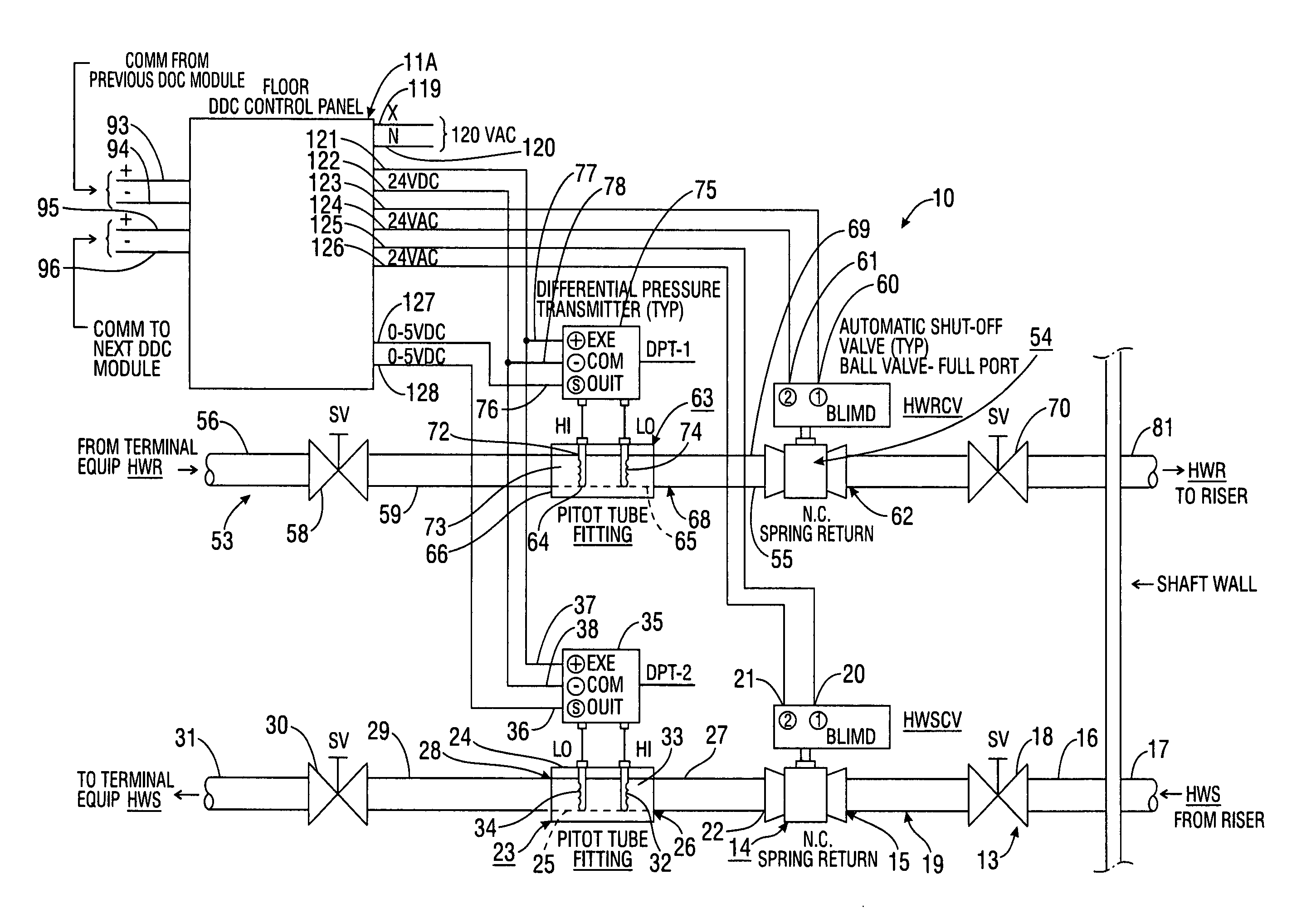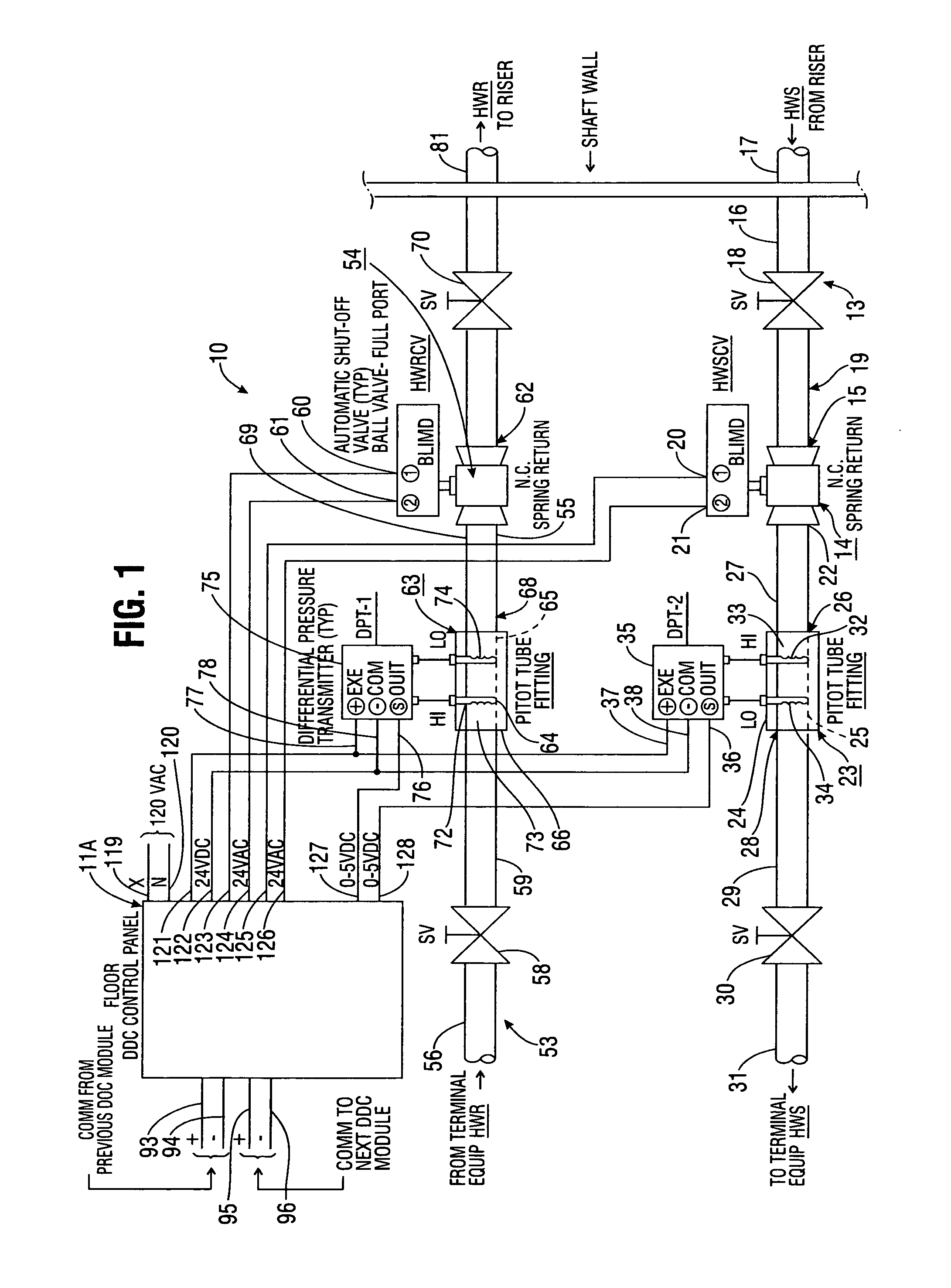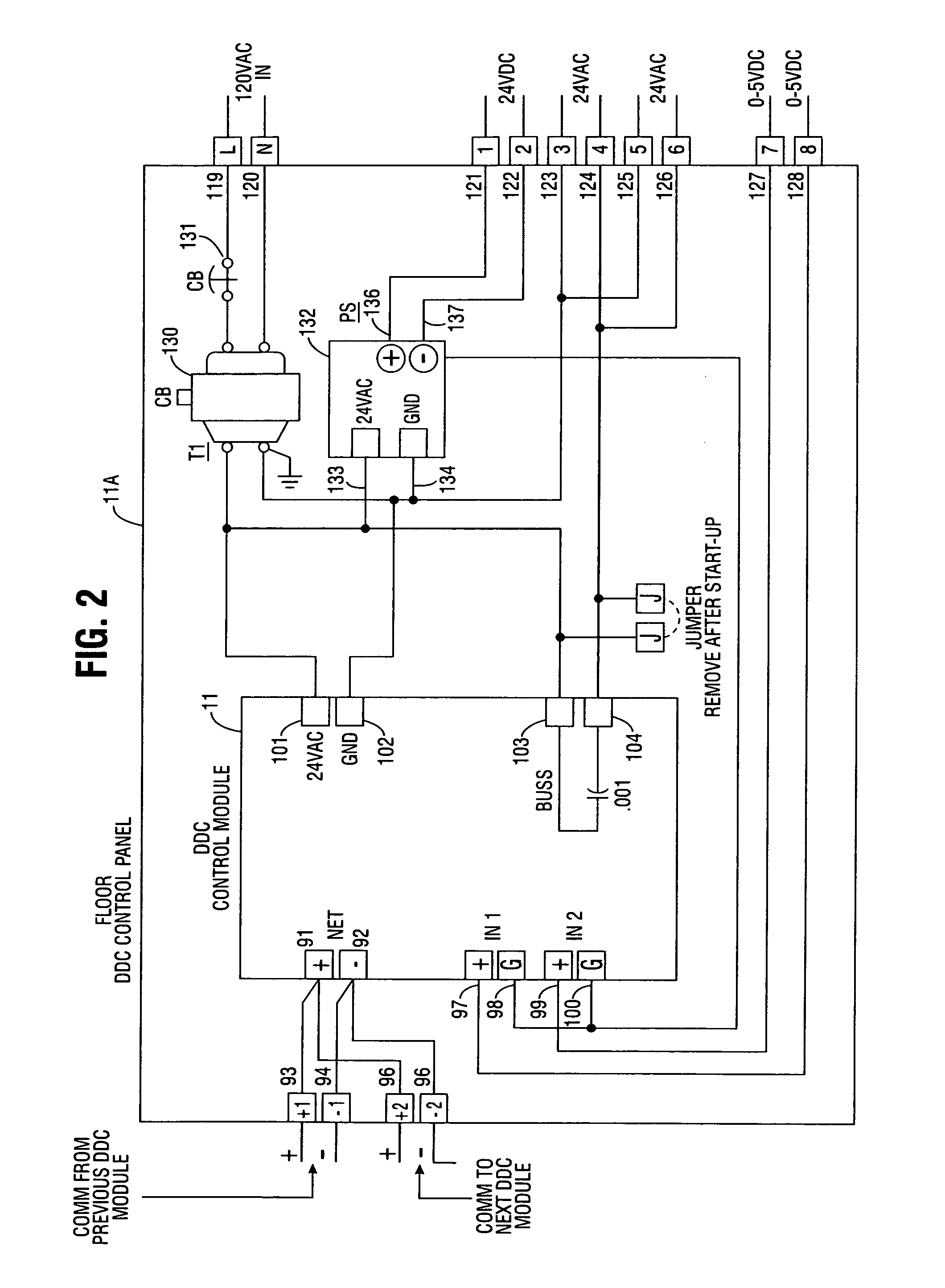Water leak detection and shut-off method and apparatus using differential flow rate sensors
a technology of differential flow rate and water leak detection, applied in the direction of fluid tightness measurement, valve operating means/release devices, instruments, etc., can solve the problems of increasing the probability of leakage, electrolytic water leak detection is effective, and many different locations are affected
- Summary
- Abstract
- Description
- Claims
- Application Information
AI Technical Summary
Benefits of technology
Problems solved by technology
Method used
Image
Examples
Embodiment Construction
[0035]FIG. 1 illustrates a basic embodiment of water leak detection and shut-off apparatus 10 using differential flow rate sensors according to the present invention. FIG. 2 is a more detailed schematic view of a control panel 11A and control module 11 comprising part of the apparatus 10 of FIG. 1. FIG. 3 is a partly diagrammatic view of a Variable Air Volume (VAV) terminal 12 which; typifies a terminal component of a closed-loop water circulation system of a type which apparatus 10 is intended for use with.
[0036]Referring now to FIG. 1, it may be seen that water leak detection and shut-off apparatus 10 according to the present invention includes an upstream inlet port 13 for receiving a flowing liquid such as hot water which is pressurized above ambient atmosphere pressure by a pump and / or a gravity pressure head, i.e., from a pump at any elevation or a tank at a higher elevation than inlet port 13. Upstream inlet port 13 is connected by a fluid pressure-tight tube or pipe to the i...
PUM
 Login to View More
Login to View More Abstract
Description
Claims
Application Information
 Login to View More
Login to View More - R&D
- Intellectual Property
- Life Sciences
- Materials
- Tech Scout
- Unparalleled Data Quality
- Higher Quality Content
- 60% Fewer Hallucinations
Browse by: Latest US Patents, China's latest patents, Technical Efficacy Thesaurus, Application Domain, Technology Topic, Popular Technical Reports.
© 2025 PatSnap. All rights reserved.Legal|Privacy policy|Modern Slavery Act Transparency Statement|Sitemap|About US| Contact US: help@patsnap.com



